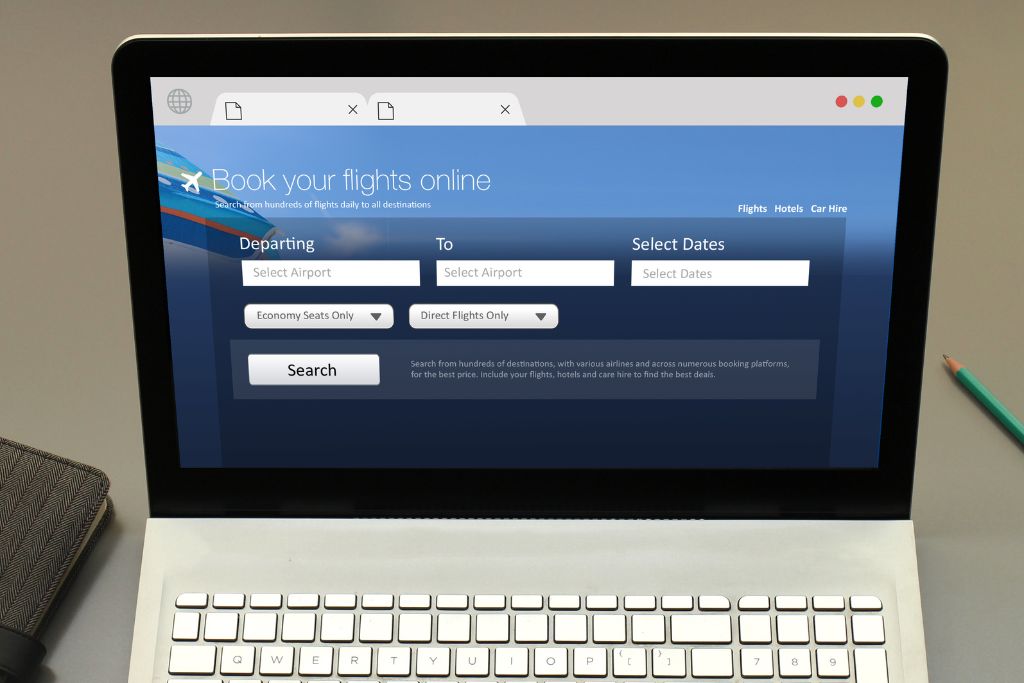Want To Travel More For Less? These 8 Booking Tips Make It Possible


Want To Travel More But Don’t Know How To Afford It? Keep Reading To Find Out!
So how do I travel more for less then?
If you’ve ever felt like your dream trips are just out of reach because of the cost, you’re not alone.
Travel can be expensive, but it doesn’t have to be.
Over the years, I’ve learned that saving money starts long before you pack your bags—it begins the moment you start planning.
From sneaky booking hacks to timing your searches just right, there are smart ways to stretch your travel budget without sacrificing the experience.
Whether you’re planning a weekend getaway or a big international adventure, these 8 tried-and-true tips will help you book smarter, travel more often, and keep more money in your pocket.
1. Book Early (But Not Too Early)
One of the most effective ways to save money on travel is to book in advance—but timing is everything.
Booking too early can be just as expensive as booking last minute.
Airlines and hotels often release their prices up to a year ahead, but those early prices aren’t always the lowest.
Instead, they tend to fluctuate based on demand, seasonality, and booking patterns.
For domestic flights, the sweet spot is usually between 1 to 3 months before departure.
Alternatively, for international travel, aim for 2 to 6 months ahead.
These timeframes tend to offer a balance between availability and price.
That said, prices can spike around holidays, festivals, or school vacations. Therefore, if you’re traveling during a peak period, it’s wise to book on the earlier side.
Tools like Google Flights, Hopper, or Skyscanner can help you track pricing trends for your desired routes.
They often include predictions on whether prices are likely to rise or drop. Which will help you decide whether to book now or wait a bit longer.

2. Use Incognito Mode When Searching
Have you ever searched for the same flight or hotel multiple times, only to see the price mysteriously go up? You’re not imagining it.
Many booking websites use tracking cookies to monitor your activity. They may raise prices based on your repeated interest in a specific route or destination.
This tactic, often referred to as dynamic pricing, can pressure you into booking faster out of fear that prices will keep climbing.
To avoid this, simply switch to incognito mode (also called private browsing) in your browser.
This prevents the site from saving your search history, cookies, or login details, which helps you view the most unbiased prices.
For an extra layer of stealth, try searching from a different device, browser, or Wi-Fi network.
Especially if you’re still seeing elevated prices when you look.
Some seasoned travelers even use VPNs to compare prices from different countries, as regional pricing can vary significantly.

3. Set Price Alerts
One of the easiest (and smartest) ways to save money when booking travel is to let the deals come to you.
Instead of checking flight or hotel prices every day, which can be time-consuming and frustrating, use price alert tools that automatically track prices and notify you when they drop.
Websites and apps like Google Flights, Skyscanner, Hopper, and Kayak allow you to create alerts for specific routes, destinations, or even date ranges.
Once set, you’ll get email or mobile notifications when the price changes so you can jump on a deal at the perfect time.
These alerts are especially useful for popular destinations or peak travel times, when prices tend to fluctuate the most.
By setting alerts early and being patient, you’ll avoid overpaying and increase your chances of grabbing that elusive travel bargain.

4. Be Flexible With Your Travel Dates
One of the biggest keys to scoring cheap travel deals? Flexibility.
Being open to adjusting your travel dates, even by just a day or two, can save you hundreds of dollars on flights and accommodations.
Most people tend to book trips around weekends or holidays. Which means prices during those periods are almost always higher due to demand.
But flying out on a Tuesday or Wednesday and returning midweek instead of on a Sunday can often unlock far better deals.
Airlines typically release fare sales early in the week, and demand is lowest in the middle of the week—so you’re more likely to find a sweet spot if you avoid peak days.
Instead of entering specific dates, you can view prices over an entire month or even “cheapest month” to quickly identify the lowest fares.
Flexibility also applies to travel seasons.
If you can travel during shoulder seasons—the periods just before or after peak travel (like May–early June or September–October)—you’ll enjoy lower prices, smaller crowds, and still-great weather.

5. Compare Prices On Multiple Platforms
Just because you find a great price on one site doesn’t mean it’s the best deal out there.
Travel prices, whether for flights, hotels, or rental cars, can vary widely depending on where you’re looking.
That’s why it’s essential to compare prices across multiple platforms before booking anything.
Start by using aggregator sites like Google Flights, Skyscanner, Kayak, or Momondo to get an overview of available options.
These tools pull data from various airlines and travel agencies. Making it easy to compare flight times, prices, and even carbon emissions.
Once you spot a good deal, take it a step further and check the airline’s or hotel’s official website.
Sometimes booking directly gives you perks like free checked bags, flexible cancellations, better customer service, or even a lower price.
For accommodations, don’t forget to check Booking.com, Expedia, Hotels.com, and Agoda, as well as platforms like Airbnb or Vrbo for vacation rentals.
Each may offer different pricing, cancellation policies, or bundled deals.

6. Consider Alternative Airports
When booking a flight, most travelers instinctively look for the largest or most well-known airport near their destination.
But limiting yourself to just one airport could mean missing out on better deals.
Often, alternative or secondary airports—smaller airports located within an hour or two of your main destination—offer significantly lower fares, especially with budget airlines or on less congested routes.
For example, instead of flying into San Francisco (SFO), check prices for Oakland (OAK) or San Jose (SJC).
Visiting New York City? Compare flights to JFK, LaGuardia (LGA), and Newark (EWR)—each can vary in cost and convenience.
Of course, you’ll want to factor in ground transportation costs and travel time when considering alternative airports, but don’t let distance alone deter you.
Sometimes the savings more than make up for an extra hour of travel by bus, train, or rental car.
Additionally, when searching for flights on platforms like Google Flights or Skyscanner, be sure to select the option that allows you to search “nearby airports.”
This will show you all the surrounding options, helping you spot hidden deals you might otherwise miss.

7. Use Points And Miles Strategically
Using points and miles strategically is one of the smartest ways to reduce the cost of flights, hotels, and even car rentals.
First, if you have a travel rewards credit card, make sure you’re maximizing how you earn and redeem points.
Use your card for everyday purchases, especially those that earn bonus points like dining, gas, or groceries.
Many cards also offer sign-up bonuses worth hundreds of dollars in travel credit. Therefore, it’s worth exploring options if you don’t have one yet.
Tools like AwardWallet or Point.Me can help you track multiple loyalty accounts in one place and alert you to opportunities.
Also, consider using points for upgrades rather than full bookings. An upgrade to business or first class can sometimes cost fewer points than a whole ticket.
Finally, don’t forget that points can also be used for other travel expenses.
Sush as car rentals, airport lounge access, or even travel insurance. All of which can help stretch your travel budget further.

8. Sign Up For Deal Newsletters
One of the easiest ways to score travel deals without constantly searching is by signing up for travel deal newsletters.
These curated emails do the heavy lifting for you—scanning the web, airline systems, and flash sales to deliver some of the best flight and vacation deals straight to your inbox.
Newsletters from platforms like Going (formerly Scott’s Cheap Flights), Dollar Flight Club, Thrifty Traveler, Secret Flying, and Airfarewatchdog are well known for uncovering mistake fares, flash sales, and limited-time promotions.
Many of these services are free to join, though paid tiers often offer earlier access to deals and more personalized alerts based on your preferred departure airport.
The real benefit of these newsletters is timing: many of the best deals disappear within hours, sometimes even minutes.
By receiving real-time alerts, you’ll have a much better shot at grabbing deeply discounted flights before they’re gone.
You can also sign up for newsletters directly from airlines, hotel chains, and online travel agencies (like Expedia, Hopper, or Booking.com).
Which frequently send out exclusive promo codes, early bird specials, and last-minute deals to subscribers.

🦄 Related Budget Blog Posts:
30+ Travel Essentials To Buy At The Dollar Store
Save Money For Travel Like A Pro: The 8 Hacks I Wish I Knew Sooner
Conclusion: Want To Travel More For Less? These 8 Booking Tips Make It Possible
Traveling more often doesn’t have to mean draining your savings.
With a little planning, flexibility, and the right tools, you can unlock a world of affordable travel opportunities.
From booking at the right time to using points wisely and watching for flight deals, these 8 tips are simple yet powerful ways to stretch your travel budget further than ever.
The best part? Most of these strategies don’t require major changes—just a smarter approach to how you search and book your trips.
So whether you’re planning a quick weekend getaway or a bucket-list adventure, keep these tips in mind and start saving before you even pack your bags.







